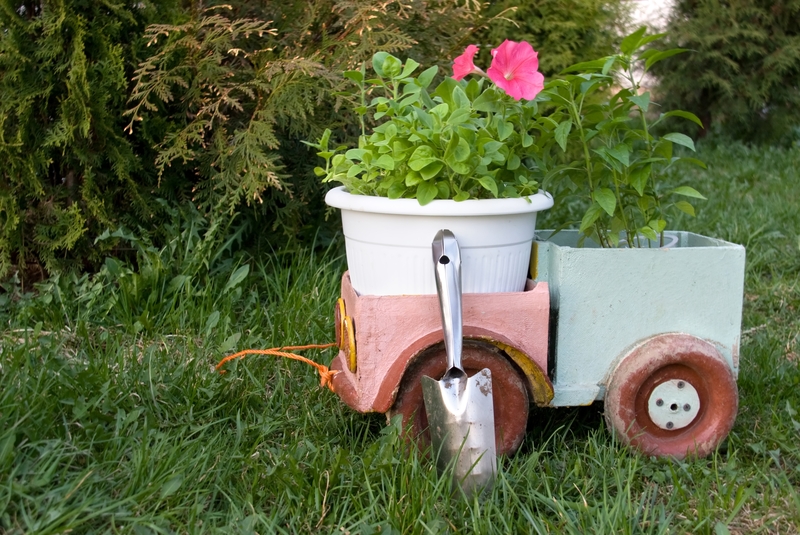The Future of Packaging: Advanced Cardboard Disposal Techniques
Cardboard packaging has become ubiquitous in modern retail and logistics, serving as the backbone of global e-commerce and product distribution. As the world grows more conscientious about sustainability, the spotlight has turned to innovative and advanced cardboard disposal techniques. This article delves deep into the future of packaging, exploring how technology, sustainability, and industry practices are revolutionizing the way we handle, recycle, and repurpose cardboard waste.

The Growing Importance of Cardboard Disposal
With the rise of e-commerce and home deliveries, cardboard usage has skyrocketed. According to recent studies, over 80% of shipped goods rely on cardboard packaging. This massive consumption generates significant volumes of cardboard waste that must be managed efficiently and responsibly.
- Environmental Impact: Improper disposal leads to landfill overflow and pollution.
- Resource Consumption: Cardboard is derived from trees, making responsible disposal crucial for forest conservation.
- Regulatory Pressure: Governments and organizations are introducing stricter guidelines for packaging waste management.
The urgent need for sustainable solutions has fueled a wave of innovative cardboard disposal techniques designed to not only recycle, but also reinvent the purpose of used packaging.
Traditional vs. Advanced Cardboard Disposal Methods
Traditional Cardboard Disposal Techniques
Historically, cardboard disposal involved simple tactics such as breaking down boxes and adding them to recycling streams. While effective to an extent, this method often suffers from contamination, inefficiency, and limited recycling rates.
- Manual Sorting: Boxes are separated by hand, often leading to inconsistency.
- Basic Recycling: Cardboard is pulped and reprocessed, but contaminants like tape or food residue reduce recyclability.
- Landfill Disposal: In some cases, cardboard still ends up in landfills, contributing to methane emissions.
Emerging Advanced Techniques for Cardboard Disposal
Modern advancements have paved the way for more efficient, environment-friendly, and intelligent methods for handling cardboard waste. Let's examine some of the game-changing cardboard disposal technologies that are shaping the future of sustainable packaging:
Key Innovations in Cardboard Packaging Disposal
1. Intelligent Cardboard Waste Identification
New AI-powered sorting systems are being implemented in recycling centers, allowing automatic detection and categorization of cardboard packaging waste. These systems analyze the quality, type, and cleanliness of cardboard, ensuring only recyclable materials enter the next phase. This improves recycling rates and reduces contamination.
- Machine Learning: Adapts to different types of cardboard and contaminants over time.
- Vision Systems: Use cameras and sensors to recognize logos, colors, or materials for smarter sorting.
2. Enzyme-Driven Cardboard Breakdown
Biotechnological advances have introduced the use of enzymes to break down cardboard fibers efficiently. Enzyme-based processes facilitate faster and cleaner separation of fibers, enhancing the quality of recycled material and reducing water and energy consumption.
- Biodegradation: Specialized enzymes speed up natural cardboard decomposition.
- Resource Efficiency: Requires less energy than traditional pulping.
3. Closed-Loop Recycling Systems
The concept of closed-loop recycling involves using recycled cardboard to create new packaging without quality loss. This method eliminates dependency on virgin materials and drastically minimizes waste generation.
- On-Site Recycling Plants: Large retailers and warehouses now invest in their own recycling facilities.
- Circular Economy: Recycled cardboard packaging re-enters the supply chain as new boxes, trays, or paper products.
4. Chemical Recycling Methods
Unlike mechanical recycling, chemical processes break down cardboard at the molecular level. This advanced technique can handle contaminated cardboard previously destined for landfills, expanding recycling possibilities.
- Depolymerization: Converts cardboard fibers into reusable raw materials.
- Contaminant Removal: Effectively removes oils, inks, and adhesives.
5. Compostable Cardboard Innovations
Some modern cardboard packaging solutions are designed to be fully compostable. These innovative products use plant-based inks and adhesives, allowing consumers to dispose of them in home or industrial composting systems and drastically reduce waste.
- Zero-Waste Packaging: Eliminates landfill input entirely.
- Rich Organic Output: Cardboard breakdown improves soil health.
6. Upcycling Cardboard for Value-Added Products
A growing trend is the upcycling of used cardboard into high-value products. Rather than simply recycling, waste cardboard is transformed into innovative items such as insulation, furniture, or even construction materials, pushing sustainability further.
- Cardboard Furniture: Lightweight, durable, and eco-friendly designs.
- Building Materials: Compressed cardboard can provide excellent thermal and acoustic insulation.
The Role of Technology in Advanced Cardboard Disposal
Technological integration is central to the development of advanced cardboard disposal techniques. From sensors to AI, digital solutions are redefining efficiency and sustainability:
- Internet of Things (IoT) Enabled Bins: Smart bins track fill levels, sorting accuracy, and contamination, optimizing waste collection and treatment schedules.
- Blockchain Tracking: Digital ledgers monitor the life cycle of cardboard, ensuring responsible handling and transparent reporting from manufacturing to disposal.
- Big Data Analytics: Analyze trends, quality, and supply chain impacts to inform proactive waste management strategies.
Automation in Cardboard Compaction and Logistic Chains
Automated balers and compactors allow warehouses and distribution centers to efficiently process large volumes of cardboard waste, reducing storage requirements and transport emissions.
- Energy Savings: Automated systems optimize equipment use and reduce operational costs.
- Data-Driven Efficiency: Smart logistics utilize real-time information to improve the environmental and financial impact of recycling efforts.
The Environmental Impact of Advanced Cardboard Disposal Techniques
Implementing innovative cardboard disposal strategies offers significant environmental benefits. Here's how advanced methods are shaping a greener future for the packaging industry:
- Reduced Landfill Waste: Modern recycling and composting drastically cut the volume of packaging waste ending in landfills.
- Cutting Carbon Footprint: Efficient recycling processes limit greenhouse gas emissions associated with cardboard production and disposal.
- Conservation of Resources: Closed-loop recycling and upcycling help protect forests and conserve water and energy resources.
- Support for Circular Economy: Advanced disposal techniques promote the continual reuse of materials, closing the loop on packaging waste.
Industry and Consumer Responsibility in Cardboard Packaging Disposal
The future of packaging depends not only on innovation but also on proactive engagement from industries and consumers. Here's what's necessary for success:
Corporate Initiatives
- Adopting Sustainable Packaging: Companies are investing in recyclable, compostable, or reusable cardboard solutions.
- Producer Responsibility Programs: Manufacturers take responsibility for post-consumer packaging through collection and recycling initiatives.
- Supply Chain Collaboration: Partnerships across the supply chain ensure consistent standards and foster eco-conscious practices.
Consumer Best Practices
- Proper Preparation: Consumers can enhance recyclability by removing tapes, labels, and contaminants before disposal.
- Participation in Composting: Compostable cardboard products should be separated and processed correctly.
- Upcycling and Reuse: Repurposing cardboard at home reduces waste and supports creative sustainability solutions.
Government Regulations and Global Standards
Governments worldwide play a pivotal role in steering the shift to advanced cardboard disposal. Progressive policies, incentives, and penalties encourage companies and individuals to adopt responsible practices.
- Extended Producer Responsibility (EPR): Legislation mandates that manufacturers manage the entire lifecycle of packaging products.
- Recycling Targets and Mandates: Cities and countries set ambitious goals to boost recycling rates and ban landfilling of recyclables.
- Standardization: Setting global standards for recyclable and compostable cardboard ensures clear guidance and efficient sorting.
Challenges Facing Advanced Cardboard Packaging Disposal
Even as cutting-edge cardboard waste disposal techniques take root, the industry faces significant obstacles:
- Contamination Issues: Food, oils, and plastics can thwart recycling efforts.
- Infrastructure Gaps: Not all regions have access to sophisticated recycling technology.
- Cost Concerns: Advanced treatments may require significant upfront investment.
- Consumer Awareness: Education is required to ensure public participation and reduce "wish-cycling."

Trends Shaping the Future of Cardboard Packaging and Disposal
Where is the industry heading? As policies tighten and innovation accelerates, several key trends are set to dominate:
- More Biodegradable Packaging: Expect greater adoption of compostable cardboard as a standard material.
- Decentralized Recycling Centers: On-site facilities cater to local needs and streamline logistics.
- Eco-Design Integration: Packaging is created with the end-of-life in mind, simplifying sorting and reprocessing.
- Consumer Engagement Tools: Apps and digital tools will make recycling easier and trackable.
- Greater Public-Private Collaboration: Industry, government, and NGOs will unite to scale up sustainable practices.
Conclusion: Embracing a Sustainable Packaging Future
The future of packaging is inseparable from the need for effective disposal solutions, particularly for versatile materials like cardboard. As advanced cardboard disposal techniques evolve, they promise a future where environmental responsibility, economic efficiency, and technological progress go hand in hand.
Embracing these innovations--from AI-driven sorting and enzyme-based recycling to closed-loop systems--will require coordinated action by businesses, consumers, and policymakers. By prioritizing sustainability at every stage, the packaging industry can transform cardboard waste from an environmental burden into a circular resource, securing a cleaner and more resilient world for generations to come.
Are you ready to be part of the packaging revolution? Stay informed, get involved, and help pave the way for an eco-friendly future of packaging and cardboard disposal.